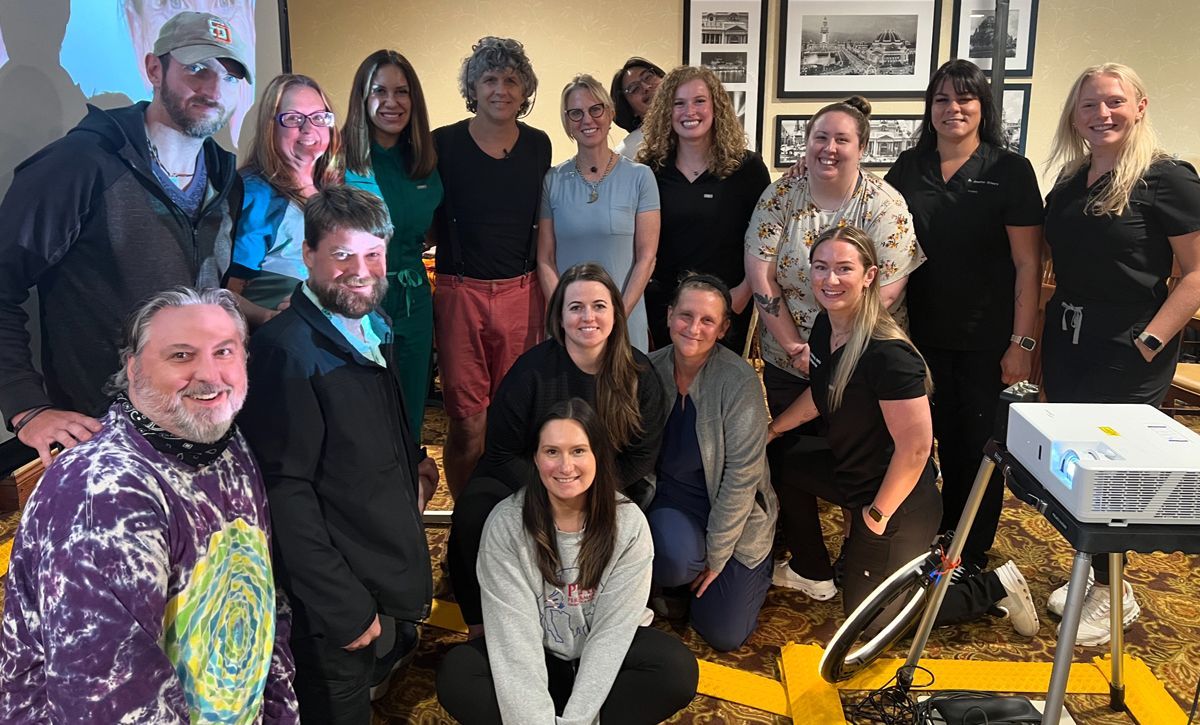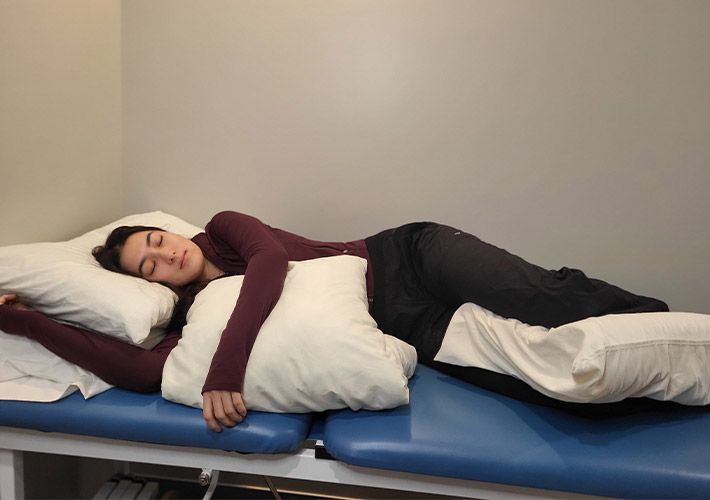The Nerve Tour

Attending the Gil Hedley Nerve Tour was an experience unlike any other. As I walked into the conference room, the atmosphere buzzed with anticipation. There, at the center of it all, stood Gil Hedley— a barefoot man with curly hair, his presence both commanding and approachable. His eccentricity was palpable, his quick-witted humor eliciting smiles and laughter from the audience instantly making us feel like part of a unique and enlightening journey. We were fortunate enough to bring all six of our doctors and eight of our licensed massage therapists; I got to tag along as well, as a current chiropractic student.
Gil’s deep respect for the human body was evident in every word he spoke. He paid heartfelt homage to the donors we would be discussing— Anna, Z, Jerry, George, and Captain— whose selfless gifts made this profound exploration possible. The reverence he showed for these individuals was not just a mere acknowledgment, but a genuine expression of gratitude that set the tone for the entire event. This conference was not just about anatomical education; it was a celebration of life, connection, and the incredible generosity of those who chose to contribute to the advancement of our understanding. There were more than a few tears shed throughout our time at the conference— something I didn’t anticipate, but appreciate looking back.
As the day unfolded, Gil’s passion for the intricacies of the human nervous system became contagious. His presentations, filled with rich, descriptive language and interactive demonstrations, transformed complex concepts into relatable and memorable experiences. Each person in the audience was not merely a passive observer but an active part of this remarkable exploration. We sat enthralled as he shared every facet of his seventeen-month project that time would allow.
Gil delved into human anatomy starting with the brain and spinal cord— bread and butter for many of us at Peak Performance. He began the topic by showing us a video of a water snake oscillating in water. Gil explained that our spinal cord undulated in the same exact manner; with every beat of our heart, the arteries in our brain that receive the surge of blood will slightly torque the brain, which leads to the ripple in our cord. 60-100 times a minute our spinal cords smoothly wave down our backs—a fascinating reminder that, as is everything else in our body, our spinal cords are alive and moving though we may not feel it.
Interspersed throughout the presentation were different scenes of nature such as the snake. Bears, Alaskan rivers, and the occasional dog were peppered in between detailed photos of dissection. Some were just for a reset after a particularly in-the-weeds breakdown of the cranial nerves, but many were to show repeating patterns that occur over and over again not only within the human body but throughout the natural world, the hallmark of these being how the nervous system deeply resembles a tree and how fitting the tree of life is in each and every one of our bodies as the system that makes us who we are.
One quote from Gil that particularly resonated with me was, "The body gives evidence to unity, not separation." This simple yet profound statement encapsulates the essence of his teachings. In school, we often get "too close" to the body, taking classes on it by system or region— cardiovascular, nervous, musculoskeletal— without appreciating the intricate web of connections that bind it all together. Gil reminded us that these systems do not exist in isolation; rather, they are parts of a cohesive whole. Throughout his presentations, he highlighted the repeating patterns and symmetries that run through our anatomy, illustrating how each part of the body is interdependent. This perspective encourages us to step back and view the body as a unified entity, where every cell, tissue, and organ works in concert, revealing a beautiful tapestry of interconnection and harmony that flows into the world around us as well.
There is so much that we take for granted about what we know of the body. There is textbook after textbook on the anatomy and physiology of every conceivable topic from head to toe. Still, there is so much we don’t know— yet. The work that Gil and his team are doing through these projects is invaluable. To study the human body in the minute levels that he’s been afforded is incredible. But one of the qualities I most appreciated of Gil, besides his drive for knowledge, was his care for the donors and their families.
Over 230 people chose to donate themselves to Gil’s work. Two of his donors, George and Anna, were married. Both of them saw the work Gil was doing in the lab and chose to entrust themselves under his care and advance the world’s knowledge of anatomy. He told us story after story of his donors, what careers they had, the times they spent together at family dinners, and their immeasurable generosity in death. Perhaps the most weighty of his stories was that of the Captain.
Captain was a pilot, both in the military and commercially. His son, Dr. Madhav Gramke, is a chiropractor who ended up connecting the family to Gil. We had the privilege to see many photos of Captain full of life in his adventures with Gil; these were intermixed with the incredible beauty Captain offered in his anatomy and the great lessons we learned from him. Gil spoke of the time Captain told him that he would “be heading to his lab soon”, proud to be a part of this amazing project. Six months from that conversation, Captain had passed.
When Gil first let on that he knew many of the donors personally, I was taken aback. I couldn’t imagine working on a friend or a loved one in such a way. I immediately assumed Gil had the most refined ability to compartmentalize his thoughts to be able to focus and disassociate the life from the work that was on the table in front of him. However, as the conference went on, I realized that was not the case. After every finding he presented, he personally thanked the donor he was working on by name. No, it turns out, it isn’t weird or disturbed to do this kind of work on loved ones. Rather, it was the greatest honor Gil could have. For the people he knew to place such a high level of trust in him, to allow him to get to know his friends better than anyone in the world ever could, to see with his eyes and touch with his hands what made them tick— that is beyond beautiful. And Gil of course recognized that and imparted that to us. On every slide of the powerpoint, through every picture, whether it was a fun group photo or a meticulously dissected brachial plexus, love and gratitude flowed throughout every inch of the Nerve Tour.
The pure skill Gil has in dissection is astounding. He explained the left vs right brain discussion in a new light, he poured over the meandering path of the vagus nerve, he had us meditate to the point that everyone in the room could physically feel our own pituitary and pineal glands. But beyond that, he made us feel. He could have easily made his tour fascinating with strictly scientific anatomical photos. Yet, he chose to continue the legacy of his donors, allowing the grieving and healing process to continue, and to make the conference exceptionally memorable.
Thank you to Gil Hedley, his team, and especially to the donors.
Bethany Wolcott
D’Youville Chiropractic












